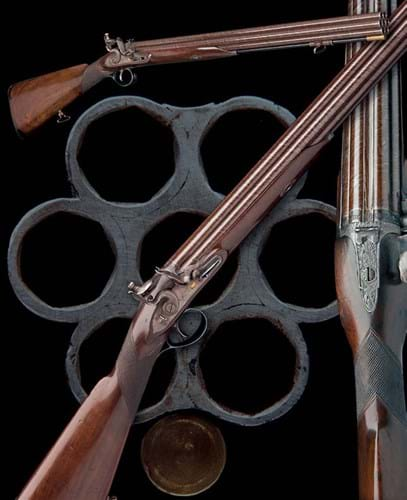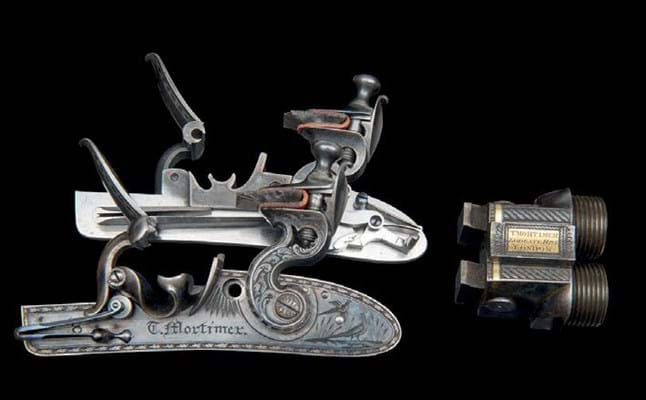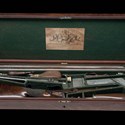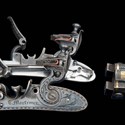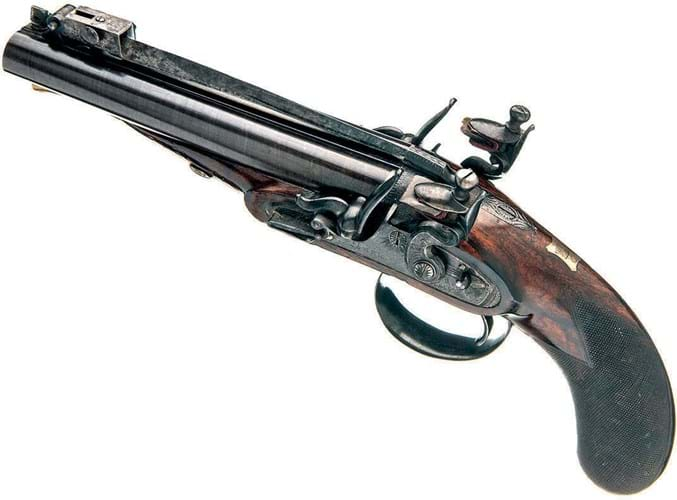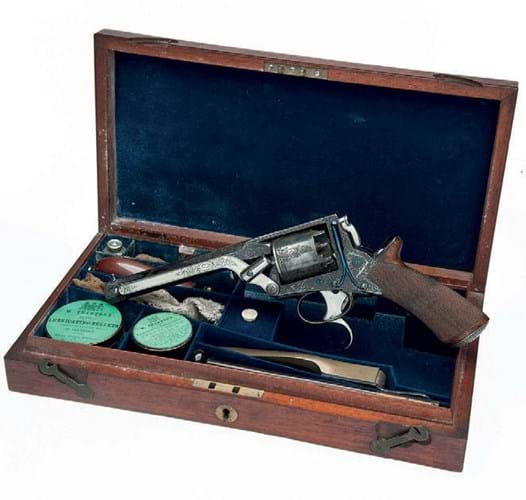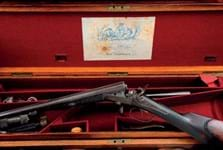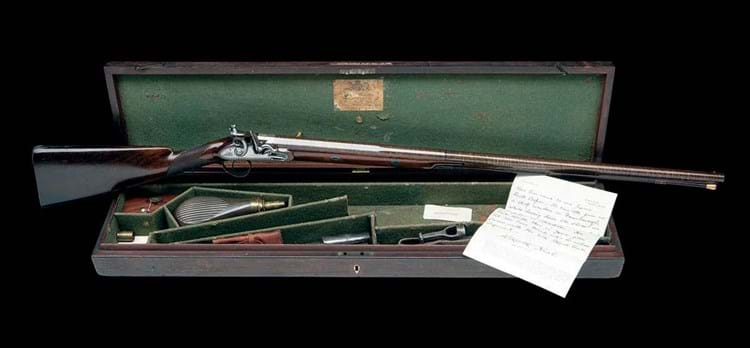
William Keith Neal (1905-90) was the most dedicated collector of antique firearms of the last century.
As noted in the Christie’s 2000 catalogue of much of the collection: “Louis XIII, probably the greatest-ever gun collector, is known to have developed an interest by the age of 10. Keith Neal used to demand to be taken to look at old cannon at Deal Castle when he was still in his pram.”
After 1950, Bishopstrow, his Regency house near Warminster, provided the setting for a magnificent antique gun collection and a centre of learning where a series of standard reference works on British firearms were produced in collaboration with Major David Back.
These included Great British Gunmakers 1740-1790 (1975) which was later revised in 1984 to included makers from 1540-1740.
Famous name
Because he owned the best, a Keith Neal provenance carries a certain cachet with collectors. A dozen guns, each retaining a collection medallion and number, were listed as such in the live online sale of Fine Modern and Antique Guns conducted by Holts (25% buyer’s premium) in Wolferton, Norfolk, on March 23-24.
Eleven of them sold for a total over £60,000.
Three were by brothers John and Joseph Manton – the subject of Keith Neal and Back’s first book, The Mantons, in 1967.
The London maker is perhaps best known for duelling pistols (when Bonhams sold items from the Keith Neal collection in 2005 a pair by John Manton c.1790 made £48,000) but here the most coveted arms were sporting guns.
A 15-bore single-barrelled flintlock sporting gun with the serial number 4992 for c.1808, complete in its maker’s walnut case bearing a John Manton parchment label, sold to a Norwegian collector at £9000.
A 20-bore double-barrelled gun by Joseph Manton numbered 5081 for 1810 took £7200 from a US buyer.
The latter, with a silver escutcheon engraved with the crest of the Duke of Cambridge (whose inventory number 36 also appears to the stock) had been updated by the Manton shop around five years after the original sale. The pans were a ‘triangular trough’ rainproof type covered by a patent of July 1815.
Both guns had sold as part of the Christie’s sale 20 years ago for similar sums: £8500 and £6000 (plus 17.5% buyer’s premium).
Mortimer rivals
Contemporaries, rivals and equals to the Manton family were the Mortimers of Fleet Street: father Henry William, son Thomas and grandson Thomas Jnr.
Also ex-Keith Neal was a Thomas Mortimer 16-bore double barrelled sporting gun with a serial number 4230 for c.1825. By this date most flintlock weapons, prone to misfiring in the wet, were giving way to the more reliable percussion cap system.
This gun, complete in its maker’s walnut storage case with every conceivable accessory, had two sets of breech-blocks for both flintlock and percussion locks. The hammer price of £11,000, tendered by a UK dealer, was the best of the day among the antique weapons. However, this fabulous gun had cost the vendor £22,000 (£25,850 including premium) in 2000.
Duel purpose pistols
Excellent antique firearms appeared from other sources.
A pair of 28-bore flintlock duelling pistols, c.1795, was signed for the Wilson gunmaking dynasty. At this time the firm, which specialised in good-quality guns for the export market, was being run by William Wilson Snr (made master of the Gunmakers’ Company in 1755) and his son William Jnr (who completed his apprenticeship in 1787 and worked until 1832).
The pistols in outstanding condition came in a possibly associated and relined mahogany case with replacement trade label. They sold for £6900.
A very rare flintlock ‘goose’ rifle c.1800 by Henry Nock (1741-1804) capable of delivering a volley from a seven-barrel cluster sold to a UK dealer at £9500 (the iron furniture had been re-blued).
An impressive 20-bore flintlock double-barrelled carriage pistol fitted with a folding triangular bayonet went to a US collector at £6800.
Dated c.1815, it was signed Nunn to the locks while an escutcheon to the walnut half-stock was engraved with an earl’s coronet over the gothic letter C for the Cowper family. Always key to pricing, the whole retained much original finish and colour.
Tranter revolver
A much later weapon, but one always popular with collectors, is the Tranter percussion revolver.
This 54-bore example at Holts was the early form of William Tranter’s (1816-90) patent with a double-trigger mechanism (one to rotate the cylinder and cock the gun, a second to fire it) and a screw-mounted articulated ramrod.
Later models, including those bought in quantity by the Confederate States after the onset of the American Civil War, employed a single trigger.
It was also in exceptional condition, retaining the majority of its original finish and housed in a maker’s walnut storage case containing a Tranter’s patent double cavity mould, a loading rod, nipple-key, powder flask and an oil bottle. A superb example, it went to the UK trade at £4800.


